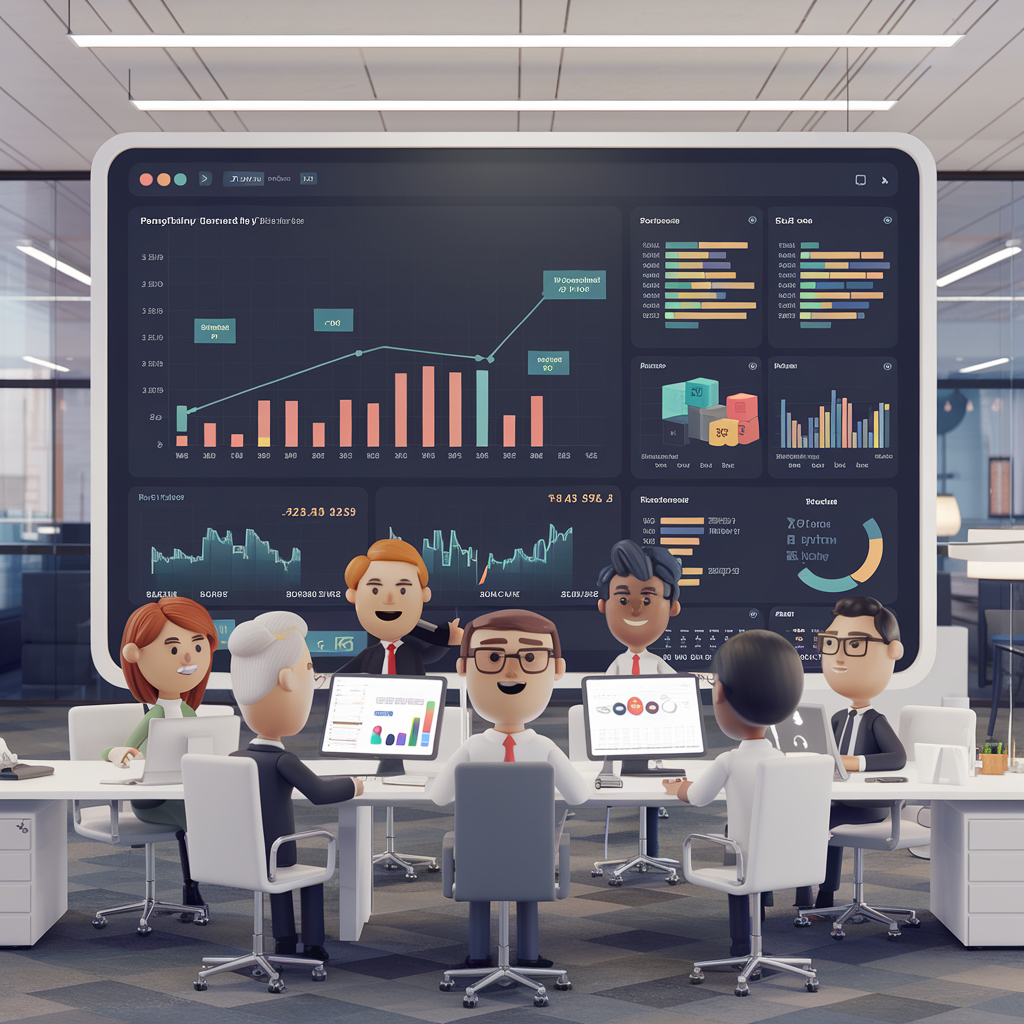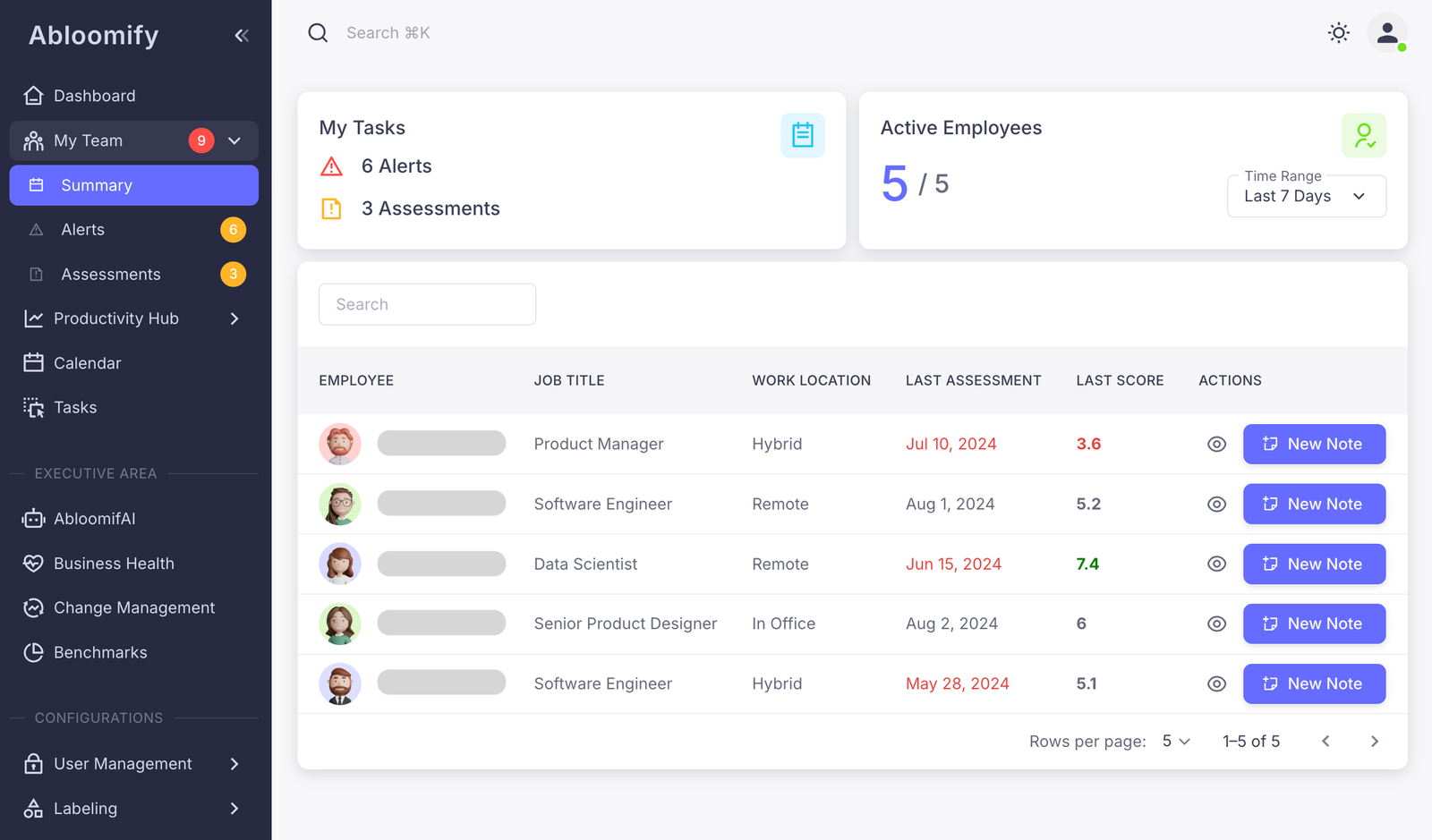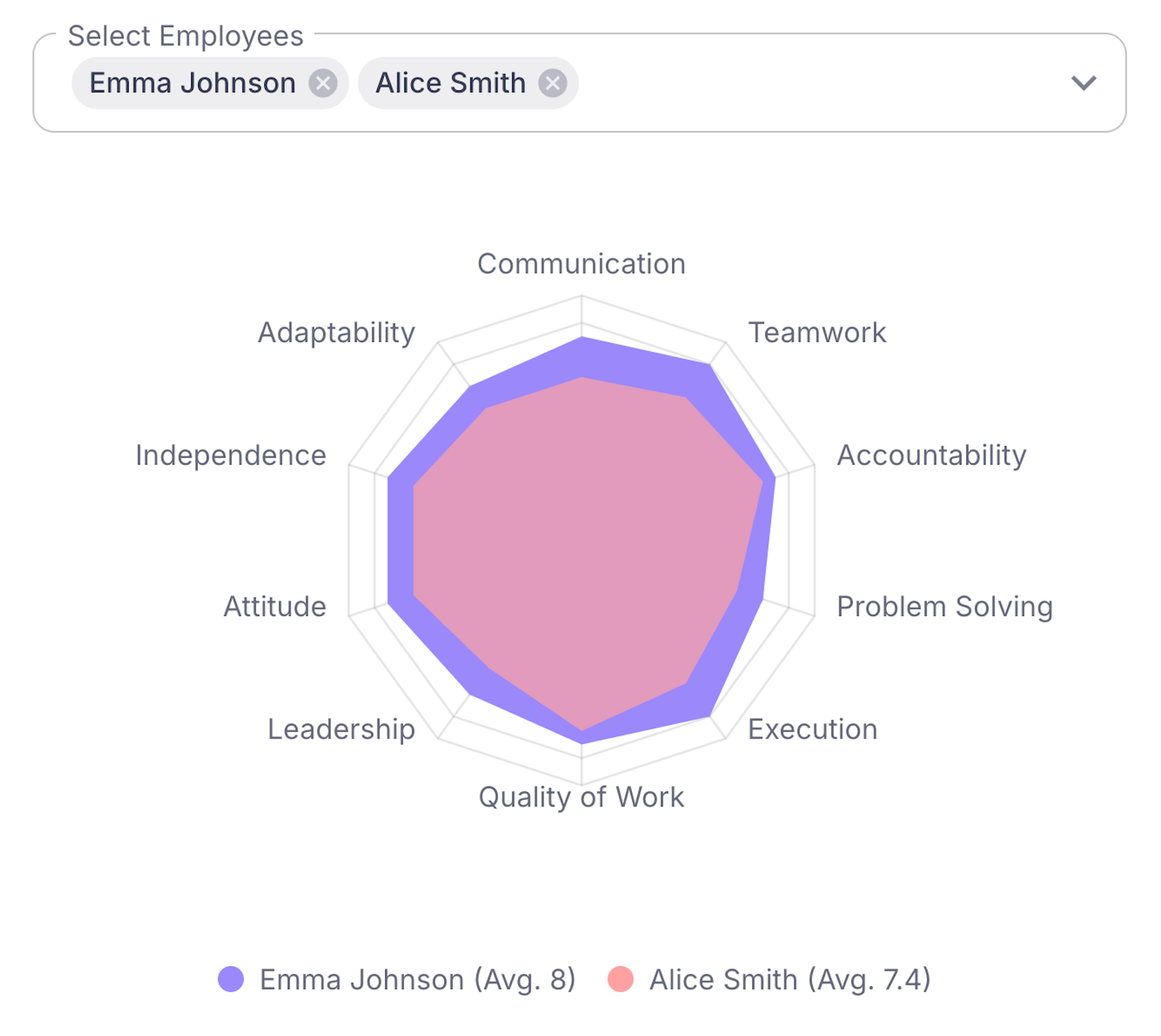Workforce analytics is reshaping how tech companies manage and optimize their teams. With AI-powered tools, data-driven insights are enabling leaders to enhance productivity, prevent burnout, and ensure agile performance management. Dive into how these innovations can drive sustainable success.
Understanding Workforce Analytics
Workforce analytics in the tech industry involves analyzing data to enhance decision-making and drive team performance. It leverages metrics from various sources like productivity tools, employee feedback, and HR systems. This data-driven approach enables tech leaders to not only pinpoint areas requiring improvement but also to foresee potential risks like employee burnout.
When teams consistently overwork without acknowledging stress levels, burnout becomes a significant risk. Workforce analytics helps by:
- Identifying patterns in work hours and productivity to warn managers of potential burnout.
- Tracking engagement levels through pulse surveys to provide insights into team morale.
- Using predictive analytics to forecast employee turnover and implement preemptive strategies.
In the realm of team performance, workforce analytics empowers tech leaders to make informed decisions. For example, balancing workloads or optimizing team structures becomes more feasible with data insights. By understanding individual and team-level performance metrics, leaders can tailor interventions that boost productivity.
Additionally, these insights contribute to more personalized employee development plans. Data reveals which skills employees excel at and which require nurturing, guiding targeted training programs. This approach benefits both the organization and its employees by aligning individual goals with the company’s objectives.
As technological advancements continue, the capability of workforce analytics will only grow. Its role in the tech industry is invaluable, offering a roadmap to better employee experiences and improved operational efficiency. For further exploration into how analytics can transform productivity, visit improving team productivity.
AI’s Role in Workforce Optimization
Artificial intelligence is changing workforce analytics, especially through tools like Abloomify’s Manager Copilot. AI’s potential to streamline productivity, engagement, and performance can’t be overstated. At the heart of these innovations are sophisticated algorithms. They make sense of vast data pools, drawing insights that help optimize team dynamics.
These algorithms process data from multiple sources, such as employee activity logs, communication patterns, and project completion rates. The processed data is then transformed into actionable outputs that guide managers in decision-making. Effective algorithms should be transparent and accountable, facilitating trust among users.
What makes these AI tools particularly compelling are their actionable insights:
- They identify productivity trends by analyzing how time is spent on various tasks.
- Managers receive alerts on team engagement levels, helping address issues before they escalate.
- Performance metrics highlight high achievers and those who may need support.
The benefits of using AI like Manager Copilot don’t end there. They offer predictive analysis which forecasts future trends and potential challenges. This empowers tech leaders to be proactive rather than reactive. For more on using AI to optimize workforce performance, visit harnessing AI to optimize workforce performance.
As AI continues to evolve, its role in workforce optimization deepens. When aligned with ethical considerations, AI tools will drive meaningful improvement in tech environments.
Maximizing Team Productivity
Maximizing team productivity is an intricate dance of timing, feedback, and awareness. Workforce analytics offer a pathway to understand and optimize these elements. Consider the modern tools at your disposal.
Scheduling is more than aligning calendars; it’s about syncing energy levels and maximizing focus. Data-driven tools can analyze patterns, recommending optimal collaboration times. Leveraging workforce analytics, high-performing teams often use scheduling platforms that adapt dynamically, suggesting meetings when team synergy peaks.
Feedback loops are vital for informed decision-making and continuous improvement. Advanced analytics technologies can process feedback efficiently, highlighting patterns and employees’ growth areas. Implement regular feedback mechanisms that track progress and offer actionable insights. Organizations have benefited from tools that use data to predict potential roadblocks and preemptively offer solutions.
Another critical component is productivity alerts. Alerts can guide teams back to intended goals when digital distractions rise. Analytics can identify when focus wanes, sending reminders or blocking off time for deep work. Teams that employ these alerts gain hours of productive time each week.
Consider a use case from a leading tech firm. They integrated workforce analytics into their project management tools, achieving a 15% increase in developer productivity. This proactive approach helps teams prioritize tasks and streamline workflows.
Harnessing these strategies, organizations transform insights into actual productive changes. For more on enhancing productivity through smart tools, explore these AI era techniques.
Building a Resilient Workforce
In the evolving tech landscape, building a resilient workforce requires strategic use of workforce analytics. Resilience within tech teams emerges not just from individual strength, but from well-planned structures and processes.
Workforce analytics allows us to delve into capacity planning with precision. Through data, we can predict workflow demands and manage resources effectively. Consider how real-time data aids in assessing projects:
- Identify peak periods and allocate resources proactively.
- Analyze task completion times for efficient delegation.
- Forecast project lulls and redistribute tasks to maximize productivity.
Workload balancing becomes a sophisticated science when driven by analytics. Visualization tools help tech leaders recognize when teams are over or underutilized. By monitoring team input and output, companies can prevent burnout while maintaining productivity. Analytical insights show correlations between balanced workloads and team retention, fostering a more committed workforce.
More than managing current capacities, analytics empower organizations to adapt swiftly to change. Whether incorporating new technology or shifting market demands, workforce data reveals patterns in team adaptability. Companies that leverage this data can adjust role expectations and training programs to align with the shifting environment.
As companies increasingly rely on tech-driven performance models, embracing workforce analytics is crucial. For a deeper dive into this intersection between tech and workforce management, explore how workforce analytics unlocks potential in tech teams. Harnessing these insights not only builds resilience but ensures companies are prepared for the challenges of tomorrow.
Driving Sustainable Growth
In the dynamic landscape of tech, harnessing workforce analytics for sustainable growth isn’t just about data – it’s about strategic insight. Understanding the future direction requires focusing on key factors:
- Long-term Planning: Workforce analytics provide a roadmap to anticipate future skill needs. By analyzing recruitment trends, companies can prepare for shifts in technology and consumer demand. This proactive approach secures a competitive edge by ensuring talent aligns with strategic goals.
- Performance Management Frameworks: Effective frameworks rely on accurate, data-driven insights. Analytics pinpoint strengths and opportunities for improvement. They enhance performance management by providing quantitative metrics that inform decisions. For example, tech firms can calibrate KPIs to ensure they reflect real-time objectives and outcomes.
- High-performing Teams: Cultivating high-performing teams involves understanding team dynamics. Analytics can identify collaboration patterns and communication gaps. This awareness enables HR to tailor interventions, boost synergy, and optimize productivity.
Moreover, workforce analytics act as a catalyst for sustainable practices, promoting efficient resource utilization and reducing turnover. By integrating analytics into operational strategies, tech companies can sustain growth while maintaining agility. It’s not just about numbers – it’s about nurturing environments where employees thrive.
For those looking to integrate workforce analytics into their strategy, exploring how to unlock the power of workforce analytics can provide additional insights. The result? A technology-driven framework that fosters both innovation and sustainable growth.
Enhancing Employee Engagement
Effective workforce analytics in tech not only drives sustainable growth but also enhances employee engagement. Imagine a world where AI designs personalized career paths, making growth tangible and attainable for each employee. Analytics enables firms to create customized development plans that align with individual skills and the company’s needs. Employees feel more valued, knowing their ambitions are recognized and supported.
Feedback mechanisms are crucial in fostering engagement. Regular, actionable insight gathered through analytics ensures feedback is a continuous process. This helps employees feel heard and understood, improving morale and productivity. Organizations can use data to pinpoint engagement pain points and adjust strategies to enhance the employee experience.
Creating a meaningful work environment is a vital component of workforce analytics. Leaders can use insights to understand what drives their teams, facilitating environments that support collaboration and innovation. By understanding what makes work meaningful to different employees, businesses can align their missions with team goals, enhancing the sense of purpose.
To harness these benefits:
- Implement AI-driven career path tools that offer personalized recommendations and development plans.
- Establish continuous feedback loops using real-time data to address workforce concerns promptly.
- Cultivate meaningful work by aligning individual roles with the organizational mission.
Such strategies not only boost engagement but also retain top talent in an ever-competitive tech landscape. These insights are essential for any HR leader aiming to increase employee engagement and navigate the complex dynamics of modern workplaces. Explore more on increasing employee engagement tips.
Navigating Change with Analytics
Workforce analytics can be a powerful ally in change management for tech companies. These tools are designed to optimize processes, cut costs, and keep pace with industry trends. As organizations navigate shifts in technology and market demands, data can transform these challenges into opportunities.
First, consider the role of predictive analytics. By analyzing patterns in workforce data, tech companies can anticipate changes. This foresight allows them to reallocate resources efficiently before disruptions occur. Predictive insights enable leaders to craft proactive strategies rather than reactive responses.
Another facet is cost reduction. With detailed analytics, companies can identify redundancy and streamline operations. This minimizes wastage and maximizes resource utilization. For instance, analytics might reveal unnecessary complexities in onboarding processes. Armed with this information, HR teams can simplify procedures, saving both time and money.
Moreover, workforce analytics supports adapting to emerging industry trends. By continuously monitoring skill demands, companies can plan training and development initiatives effectively. This ensures that employees are equipped with the right tools and abilities to thrive in evolving environments.
Consider also the human element: Analytics provide a lens into team dynamics and cultural shifts. Understanding these nuances helps in tailoring change management strategies to be more inclusive. When employees feel heard, resistance to change decreases.
For tech-savvy HR leaders, navigating change with analytics requires the right technology. Explore relevant insights on unlocking the power of workforce analytics to stay ahead. Integrating robust analytics can redefine how companies embrace change and maintain competitive advantage.
Choosing the Right Tools
Choosing the right analytics platform can fundamentally reshape how tech companies manage talent. It’s crucial to make informed decisions that align with organizational needs and priorities. Start by considering the compatibility of potential platforms with existing systems. Integration should be seamless to avoid disruptions and maximize efficiency. A platform that supports easy integration can significantly reduce the time and costs associated with workforce analytics.
Data privacy is another key consideration. As tech companies handle sensitive information, it is vital to select tools that prioritize robust data protection mechanisms. Look for platforms that offer encryption, secure access controls, and compliance with regulations like GDPR.
A tailored solution is also invaluable. Platforms like those offered by Abloomify are designed specifically for tech industry needs. They provide customizable features that can adapt to unique workflows and specific organizational challenges.
Consider the following checklist when evaluating analytics platforms:
- Ensure seamless integration with existing systems and tools.
- Evaluate data privacy and security features to safeguard sensitive information.
- Opt for solutions that offer customizable features specific to your industry needs.
- Engage with platforms that provide comprehensive support and training resources.
- Explore the scalability of the platform to grow alongside your organization.
Selecting the right platform allows HR leaders to leverage workforce analytics effectively, transforming data into actionable insights that propel company growth and adaptability in a fluctuating tech landscape. Remember, the right tool can accelerate transformation, driving both efficiency and innovation.
Looking Forward: The Future of Workforce Analytics
The future of workforce analytics in tech is set to revolutionize how we approach talent management. Emerging technologies such as AI and machine learning will enable even more precise data processing, offering real-time insights into employee performance and engagement. Predictive analytics will not only highlight current trends but will forecast potential challenges and opportunities.
Consider the integration of natural language processing. It will allow for the analysis of sentiment in communications, increasing the depth of insight into organizational culture. This can reshape employee surveys, moving them beyond static forms to dynamic, interactive tools that adapt based on ongoing analysis.
Challenges will inevitably arise. Data privacy remains a critical concern. Tech companies must balance innovation with ethical data management. Continuous innovation requires a commitment to transparency and safeguarding personal information. These challenges push forward the need for regulatory frameworks that protect employees while enabling analytical advancements.
Continuous innovation doesn’t just mean adopting new technologies. It also involves rethinking how we use data. Moving towards a more holistic view, we can integrate workforce analytics with business metrics, creating a synergy between HR and business outcomes. Emphasizing personalized learning paths could improve retention and productivity, ultimately inspiring a more agile workforce.
For those keen on exploring further, check out this resource on harnessing AI to optimize workforce performance. This amalgamation of groundbreaking technologies and thoughtful integration has the power to redefine the landscape of workforce analytics in unprecedented ways.
Final words
By embracing workforce analytics, tech leaders can build resilient, high-performing teams. With tools like Abloomify, it’s easier than ever to harness these insights. For more on optimizing your workforce, contact us today.



